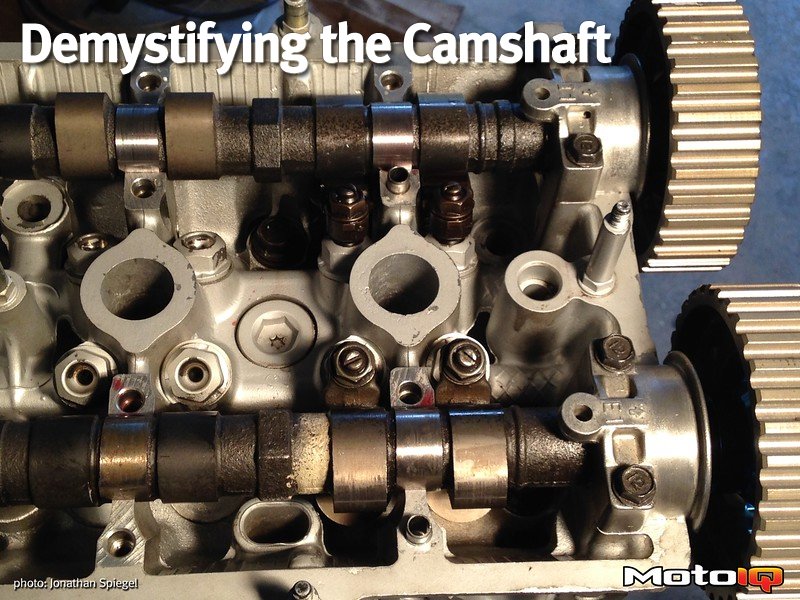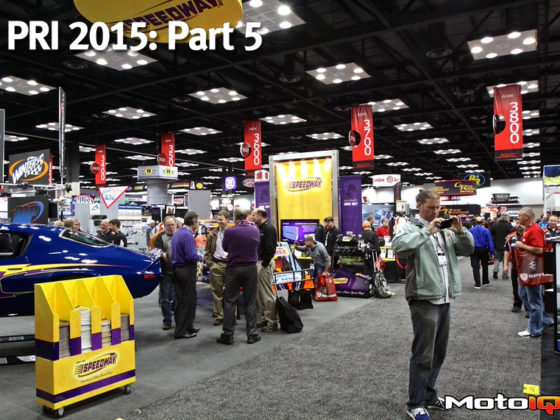
Demystifying the Camshaft: Part 2 – Terminology
In the first installment of this series, we took a fairly in-depth look at valve events, which, simply put, are the actions that are caused by the camshaft with regards to opening and closing the intake and exhaust valves. Ultimately, these events determine the power characteristics of an engine, because they control the amount of air/fuel mixture that the engine ingests at any given rpm, and they also control the flow of exhaust gases leaving the combustion chamber. Hopefully, Part 1 helped you to understand the processes involved in developing a camshaft design, so at this point we’re going to discuss the terminology that directly describes the physical parameters of the camshaft itself.
Camshafts are designed using eccentrics. In some cases, camshaft designers may be unusual people, but I’m referring to eccentrics in the mechanical sense. If two circular profiles share the same center, then they are considered concentric. Essentially, an eccentric is a device that converts circular motion into linear motion by using two circular profiles that have different centers. In a strict definition, at least one of the circular profiles contains the center of both circles, but with camshafts this may not always be the case, especially with high lift profiles and asymmetric designs. In a sense, it is similar to the way a crankshaft operates – circular motion is converted into linear motion through an interface with some type of linkage. With a crankshaft, the motion is translated via connecting rod, while with a camshaft, it may be translated by some type of follower – usually a rocker arm, a lifter or tappet (in a pushrod engine); or, in some cases, by direct interface with a valve stem. Ideally, we want to open and close the valves as rapidly as possible – but there are practical limits due to the shock loads and extreme wear that this can impart to the rest of the valvetrain.
 An individual camshaft lobe, showing the typical eccentric shape
An individual camshaft lobe, showing the typical eccentric shape
Lobe:
A lobe is the name for an individual eccentric profile that is present on a camshaft. There are many individual components in a lobe design. Follow along as we take a trip around the lobe.
 A sketch of a typical camshaft lobe. Note that the center of the “nose” falls within the base circle. This is the true definition of an eccentric profile, although radical cam profiles may not display this characteristic. Note that this design is symmetrical – the opening and closing rates of the valve will be identical.
A sketch of a typical camshaft lobe. Note that the center of the “nose” falls within the base circle. This is the true definition of an eccentric profile, although radical cam profiles may not display this characteristic. Note that this design is symmetrical – the opening and closing rates of the valve will be identical.Base Circle:
The base circle is determined by the largest theoretical circle that can be drawn inside a lobe, concentric to the centerline of the camshaft. The base circle profile of the camshaft lobe determines the period of time that the valve remains closed during one revolution of the camshaft. Sometimes referred to as the “heel.”
 An asymmetric camshaft lobe. This type of design, which is very common, opens and closes the valve at different rates.
An asymmetric camshaft lobe. This type of design, which is very common, opens and closes the valve at different rates.Opening Ramp:
The opening ramp is a portion of the lobe that is tangent to the base circle, and is the point at which circular motion begins to translate into linear motion. This is the area of the lobe where the valve lash is “taken up” and the follower starts to actuate the rest of the system. This transition area is usually gradual so as not to shock the valvetrain.



